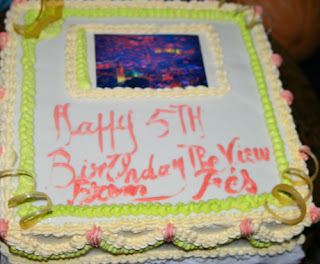In our yearly update on guide books, Ibn Warraq takes a look at two players in the market. As he discovered, not all guide books are created equal.
There can be little argument that if it were a beauty contest, then the DK Eyewitness Travel Morocco guide would walk away with the winner's sash. Its layout is artfully scattered with photographs, drawings and maps. However, beauty can sometimes be skin deep.

When reviewing the guide,
The Independent newspaper was lavish in its praise saying "No other guide whets your appetite quite like this one." It certainly does that. But having whetted your appetite, it fails to satisfy. Simply put, the content is wafer thin.
The positioning of the
Eyewitness guides has always been about photographs and illustrations, and, as I said in my introduction, it is great to look at - at first glance. But looking closer, it soon becomes clear that much is mere decoration and much of it bland at that. Do we really need a picture of a plane landing at a regional airport, an ambulance, a ferry in the Straits of Gibraltar, a photo of an ATM and a tube of mosquito repellent? I could go on... The photographs are hardly stunning. Yes, I hear you say, but it is not trying to be an arty publication; true, true. But a photo of the inside of Agadir airport has to have something going for it.
None of this would matter, if the written content were up to scratch and up to date. This is where the
Eyewitness guide falls down badly.A careful reading of guide is an interesting experience. There is something in the tone... Then it comes to me. The soulless prose is not an attempt to appear authoritative or dispassionate. It is a product of having been translated from the French.The result is a text that comes awkwardly off the page is is without a sense of personality.
The restaurant listings are sparse and include few of the more interesting eating places. For example, in Tangier there is no mention of wonderful restaurants such as
Restaurant Le Nabab in the Kasbah and
Les Passagers de Tangier, overlooking the Grand Socco. However, the guide does list the delightful
Tanja Restaurant. And so it goes. In Chefchaouen, Fez, Casablanca, Marrakech and Essaouira, it lists some eateries of dubious quality and misses some of the best that Morocco has to offer.
When it comes to accommodation, the Eyewitness guide again fails to deliver. That it could list the Medina of Fez accommodation and include only four or five dars or riads is simply puzzling. This was not about leaving out the more expensive luxury riads; they also listed few of the Medina's mid and low range accommodation. Another example, which is truly hard to understand is the failure in Ouzazarte to list one of the oldest and best places to stay - Dar Daif, that has been in business for more than twenty years. Again it was the same throughout the kingdom. Tangier to Tetouan, Marrakech to Mezouga, there are great gaps in what is available.
Factual information about towns is generally fine, though not extensive. Where the guide does score points is in the interesting and detailed explanation of places such as the Bou Inania Medersa. The artwork, diagrams and photographs all combine to provide you with a really good sense of what to look for. The entry fee is not mentioned.
Temple wall at Lixus showing Roman construction on top of larger Carthginian building blocks
However, the entry on the fascinating archaeological site at Lixus mentions the Phoenicians and then skips the Carthaginians altogether, before coming to the Romans. It may seem a petty detail, but this basic historical omission detracts from the real appreciation of the extraordinary ruins on display.
So, summing up, while the
Eyewitness Travel guide may be pleasing on the eye, it lacks the depth that should enhance your trip to Morocco.
 The Rough Guide to Morocco
The Rough Guide to Morocco is a very different beast! Big on words, sparse on photographs. Yes, it is a little heavy to lug around all day, but it has far more information than its competitor above. There is good meaty stuff here, food for thought and inspiration to plan your days in Morocco. The writing is engaging and not without a sense of humour. That is not to say it is without problems. There is no such thing as the perfect guide book. It is also, I suspect, what they call in the trade, as a "desk job" - that is to say, that much of the research has been done in the office, rather than on the ground.
The Rough Guide is in desperate need of feet on the ground to update many of the entries and include new venues. There are numerous examples of bars, hotels, accommodation and restaurants that have been closed for some time. In the case of the kosher restaurant in Fez, for example, it's been closed for around four years.
Our research at The View from Fez over time has shown that
Lonely Planet guides are still the preferred reading for the majority off people visiting Morocco. I remember a couple of years ago when we did a survey, our travel reporter, David Margan had this to say: "
90% of people Samir photographed in a one hour period in the Talaa Sghira in Fez were carrying Lonely Planet - the other 10% were lost."



















































